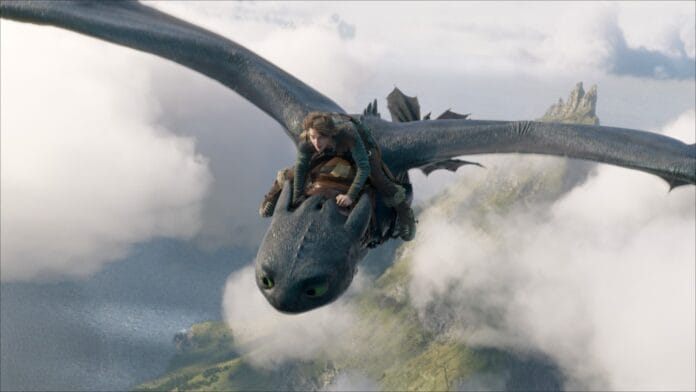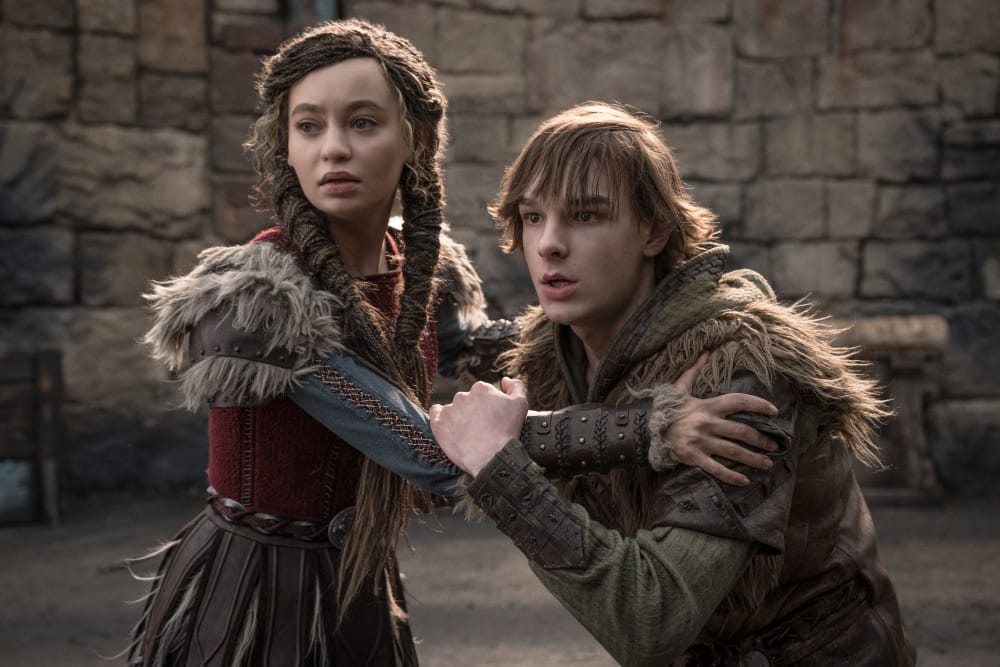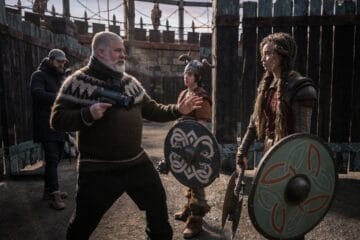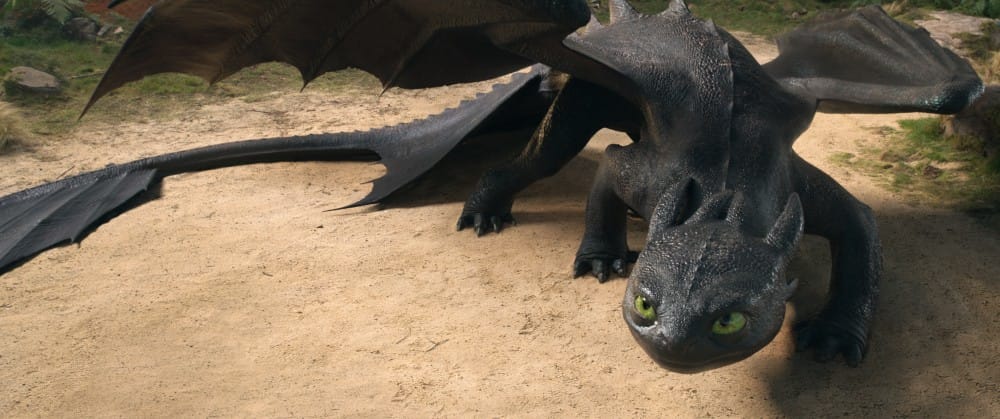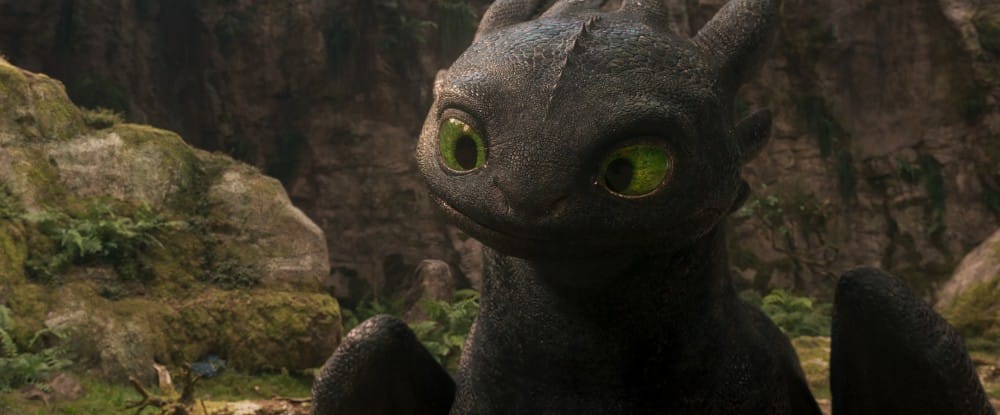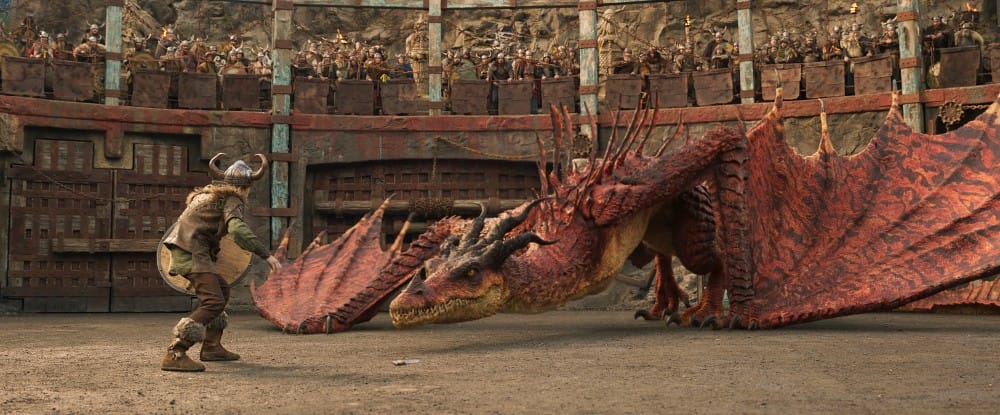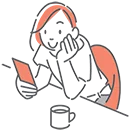|
Getting your Trinity Audio player ready...
|
[the_ad id=”3270406″]
Entrusted with the daunting task of guiding DreamWorks’ How to Train Your Dragon’s Viking clan and its winged beasts from the animation dimension into a live-action/CGI feature, Oscar-nominated writer and director Dean DeBlois (Lilo & Stitch) had the fortitude to accept the challenge with Nordic-style bravery and determination.
“I think there’s a lane to pick,” DeBlois tells Animation Magazine. “So it was either going to be a story inspired by How to Train Your Dragon or a more faithful version of the books, and all of these possibilities were discussed. Ultimately, we thought let’s tell the story that we know works, that the fans know and have developed an affection for and then try to be additive.”
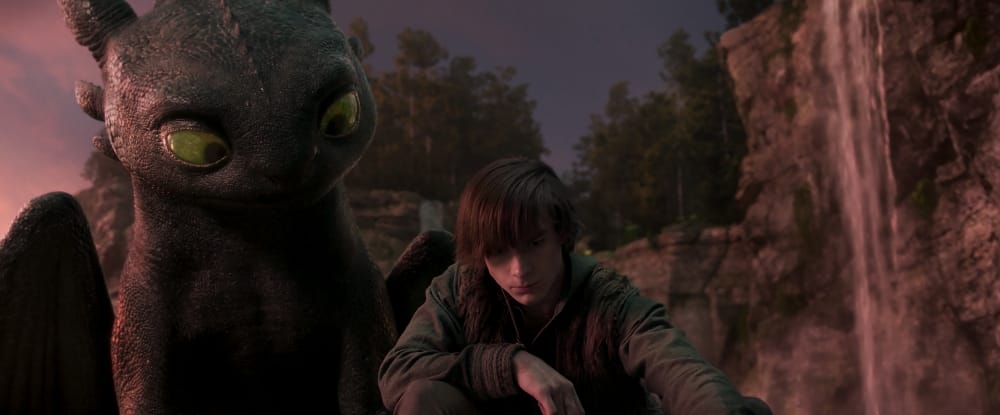
How to Adapt a Classic
In 2010, DeBlois and co-director Chris Sanders helmed DreamWorks Animation’s first adaptation of the award-winning children’s book series of the same name by British author and illustrator Cressida Cowell. It was followed by two animated sequels, 2014’s How to Train Your Dragon 2 and 2019’s How to Train Your Dragon: The Hidden World, both also directed by DeBlois.
Originally resistant to being involved in “lazy” live-action projects, DeBlois changed his tune when he considered the positive aspects of dipping back into the world of Hiccup and Toothless and having the chance to ensure any live-action version didn’t diminish the core qualities of his animated trilogy. This new adaptation stars Gerard Butler, Mason Thames and Nico Parker and serves as a retelling of the original animated movie. Not to mention that the historical-fantasy property is an invaluable IP as evidenced by the immersive Isle of Berk land at Universal’s new $7 billion theme park, Epic Universe.
“There were two motivating factors,” he shares. “Yes, the moment that I had the conversation with Universal, I was recalling what I’d said about these live-action remakes. I feel like they lack purpose and therefore seem like missed opportunities. You could be putting that budget toward something that’s original, that’s going to delight audiences and might even create a new franchise for you. But I understand it’s a risk-averse environment, that these are huge, expensive movies. I feel very protective of the characters and the worlds. Though I didn’t feel like it necessarily needed to be done, I’m very proud of the animated movies. I felt like I’d put a period on the end of that, the statement of those three acts becoming one larger coming-of-age [story].”
DeBlois, who is already working on the live-action Dragon sequel slated for 2027, says there were several ways the live-action version expands on the original film’s offerings. “There were things we did for the animated movies because we were under a time pressure,” he notes. “[Now] we could indulge the mythology more of how this tribe came together, we could indulge the character depth a little bit more, give a little more attention to characters that were a bit shortchanged like Astrid. She’s a compelling character even in the animated movies, but I felt like understanding where she came from, why she has this acrimonious relationship with Hiccup, those presented themselves as opportunities.”
“We went through the same design phase we would in animation. We were going for the realism of rippling muscles under skin that has different levels of reflectivity and understanding the skeletons in a really thorough way.”
— Writer-director Dean DeBlois
And then there was the depiction of the dragons’ flight in live-action. “We could explore the visceral grounded quality of what would it feel like to actually fly a dragon. We wouldn’t lean into fantasy but into the photoreal quality of it if you could have dragons living and breathing among us. What would it feel like to climb onto the back of it and fly and experience that in its full IMAX glory? I thought I’d put my money where my mouth is and try to do a version that’s made with love and attention, without trying to replace the animated movies.”
In translating material from one medium to another, creators must always be mindful of what to embrace and which elements must be enhanced due to technological limitations or restrictions.
“Where can we make it more immersive, deepen the mythology or enrich the characters and give more attention to those relationships?” DeBlois explains. “When you have actors on a set and you allow them to play out a scene and create a cadence and allow time for pacing the dialog, something magical happens. You’re not crafting the performance as you do in animation, selecting the best bits from multiple takes and putting them together and having animators bring their interpretation to it. It’s just what the actors are offering, including everything they do physically. You’re making sure all the pieces are in place so actors can feel the freedom to embody the characters and be part of the scene and shape it. Then there’s a truth that emerges.”
And what of those magnificent magical dragons, and how did DeBlois and his team manifest this menagerie? Which VFX tools were used to breathe life into them? Well, it seems that it wasn’t so foreign of a process from what the director was already familiar with.
“That’s sort of the way we create feature animation with CGI as well, with the exception [that] as we’re filming the actors we would have puppeteers,” notes DeBlois. “A guy named Tom Wilton and his whole team of puppeteers had creations like these foam heads and bodies of the dragons that are done exactly to spec. They’d puppeteer the dragons in the shots, so not only could the cameraman frame for where the dragon would be, but they would prefer it so the actor would have something to play off of; he wasn’t just looking at a tennis ball.
“That gave you a pretty truthful performance, that when handed off to the visual effects team and animation team at Framestore, they’re able to replace that foam dragon with iterations of the animation. We went through the same design phase we would in animation. We were going for the realism of rippling muscles under skin that has different levels of reflectivity and understanding the skeletons in a really thorough way. We were referencing real animals, just as we did in the animated movies. So there’s the crocodile dragon, the hippo dragon, there’s the walrus dragon, the parrot dragon, the panther dragon, and they all have very specific animal cues.”
Mixing Science and Whimsy
Aiding DeBlois in crafting this rowdy new Norse saga of clashing worlds is Framestore’s visual effects supervisor Christian Manz and Glen McIntosh, who served as How to Train Your Dragon’s animation supervisor. McIntosh is a veteran of the Jurassic Park movies and got his start with Industrial Light & Magic, working with George Lucas on Star Wars: Episodes I-III.
“You’ve got the whimsy of what Framestore does so well with Paddington and Fantastic Beasts and you’ve got these amazing creatures that are full of personality,” he adds. “Then you also have that very informed paleontology angle that Glen brings, understanding creatures of that size and their movement and how that factors into their performance. And just some really stellar animators that were acting as character supervisors across all of the Framestore studios (based in London, Montreal, Melbourne and Mumbai).”
DeBlois says having the whole Framestore team take on the movie exclusively was quite an amazing experience. “In the flying scenes, in order to make Hiccup feel like he was part of the dragon movement, like a jockey on a horse, we had these eight-axis gimbals that would on command tilt any way you want,” he notes. “On top of that, they built an animatronic dragon body, neck and head, so that when Mason was sitting in his saddle the thing could rise up and turn and bank, on top of a gimbal that’s already moving. The kid’s weight would be thrown around, and since he’s holding onto the neck but sitting in the saddle, it meant there would be movement across the dragon’s body that influences how Mason Thames would be holding on. And that made for really convincing visceral flight. It was incredible!”
DreamWorks’ How to Train Your Dragon opens nationwide on June 13.


